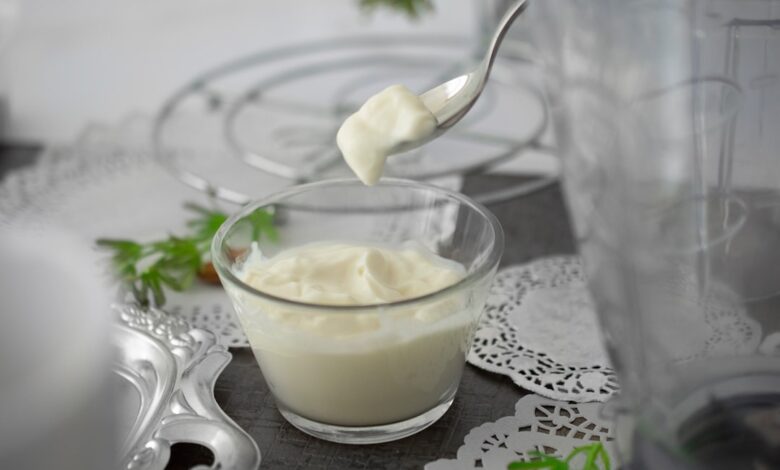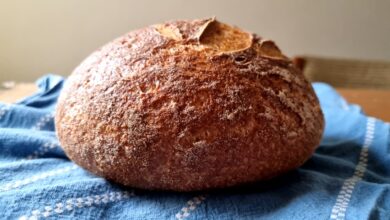Best Lactose Free Yogurt

As someone who’s been lactose-free for years (and loves yogurt!), I know the struggle is real. Finding a good lactose-free yogurt that actually tastes good and has a nice texture can feel like searching for a unicorn. But don’t worry, I’m here to guide you through the sometimes-confusing world of lactose-free yogurt and help you find your perfect match. We’ll explore the top brands, discuss what to look for on the label, and even touch on making your own!
What Makes Yogurt Lactose-Free?
First, let’s quickly break down what lactose actually is. It’s a natural sugar found in milk. Some people have trouble digesting it because their bodies don’t produce enough of the enzyme lactase, which breaks down lactose. Lactose-free yogurts tackle this problem in a few different ways.
One common method is adding lactase enzyme directly to the yogurt during production. This enzyme pre-digests the lactose, breaking it down into simpler sugars (glucose and galactose) that are easier for most people to tolerate. So, while the yogurt might technically still *contain* lactose, it’s already broken down, making it “lactose-free.”
Another method involves using alternative milk sources that naturally contain little to no lactose, such as soy milk, almond milk, coconut milk, or oat milk. These yogurts are a great option for people who are lactose-intolerant *and* might have other dairy sensitivities or allergies.
Top Lactose-Free Yogurt Brands (and What Makes Them Great)
Alright, let’s get to the good stuff! Here are some of my favorite lactose-free yogurt brands, along with a few notes about why I (and many others!) love them:
- Lactaid Yogurt: The classic choice. Lactaid uses cow’s milk but adds lactase enzyme to break down the lactose. It has a creamy texture and a familiar yogurt taste. It’s widely available in various flavors and is a reliable option for those new to lactose-free eating.
I didn’t want to use bullet points for the following brands as they don’t need it:
So Delicious Dairy Free: This brand offers a wide variety of plant-based yogurts made from coconut milk, almond milk, and oat milk. They have everything from plain and vanilla to more decadent dessert-inspired flavors. The texture can vary depending on the base (coconut is usually thicker and creamier), so experiment to find your favorite.
Silk Dairy-Free Yogurt Alternative: Silk focuses on plant-based yogurts, primarily using soy milk and almond milk. They have a good range of flavors, including some fun options like vanilla almond and dark chocolate coconut. Silk yogurts tend to be smooth and relatively mild in flavor, making them a good option for those who prefer a less tangy yogurt.
Oatly Oatgurt: Made from oats, this yogurt alternative is naturally sweet and has a creamy texture. Oatly’s Oatgurt is a good source of fiber and has a unique, slightly oaty flavor that many people enjoy. It works well in smoothies, granola bowls, or enjoyed on its own.
Kite Hill: Kite Hill uses almond milk as its base. Many find its texture and flavor very similar to traditional dairy-based yogurt. They offer a range of unsweetened and flavored options, as well as Greek-style yogurt alternatives that are higher in protein.
Oui Dairy-Free Yogurt Alternative: A French-style yogurt that’s plant-based. Packaged in cute little glass pots, Oui Dairy-Free uses a coconut base and has a distinctively thick, creamy texture. It’s often available in fruit-on-the-bottom flavors. It stands out from the usual container.
What to Look for on the Label
Navigating the yogurt aisle can be overwhelming! Here are a few things to keep in mind when choosing a lactose-free yogurt:
Ingredients List: Always check the ingredients list to see what the yogurt is made from. Look for ingredients like “lactase enzyme,” or plant-based milk alternatives like “almond milk,” “coconut milk,” “soy milk,” or “oat milk.”
Sugar Content: Yogurt can sometimes be high in added sugar, even the “healthy” varieties. Opt for unsweetened or plain varieties and add your own fruit or a drizzle of honey if you want extra sweetness. This gives you more control over the sugar content.
Probiotics: Yogurt is a great source of probiotics, which are beneficial bacteria that support gut health. Look for yogurts that list specific strains of live and active cultures on the label. The more variety, the better!
Protein Content: If you’re looking for a yogurt that will keep you feeling full and satisfied, check the protein content. Greek-style yogurts, both dairy and dairy-free, are typically higher in protein.
Added Thickeners and Stabilizers: Some yogurts contain added thickeners and stabilizers like gums or starches to improve the texture. While these aren’t necessarily harmful, some people prefer to avoid them. If you’re looking for a more natural yogurt, opt for brands with minimal ingredients.
DIY Lactose-Free Yogurt
Feeling adventurous? You can actually make your own lactose-free yogurt at home! If you’re using cow’s milk, simply add a lactase enzyme supplement (available at most pharmacies or health food stores) to the milk and let it sit for 24 hours before culturing it with yogurt starter. If you’re using plant-based milk, there are tons of recipes online that use ingredients like coconut milk, cashews, or soy milk. Making your own yogurt allows you to control the ingredients and customize the flavor to your liking.
Safety Tips and Considerations
While lactose-free yogurt is generally safe for most people, there are a few things to keep in mind:
Allergies: If you have any allergies to dairy or plant-based milk alternatives, be sure to carefully read the ingredients list before consuming any yogurt.
Sugar Content: As mentioned earlier, some yogurts can be high in added sugar. Be mindful of your sugar intake and choose unsweetened or plain varieties whenever possible.
Individual Tolerance: Even though a yogurt is labeled “lactose-free,” some people with severe lactose intolerance may still experience mild symptoms. Start with a small serving to see how your body reacts.
Frequently Asked Questions
Is lactose-free yogurt really lactose-free?
Yes, lactose-free yogurt undergoes a process to significantly reduce the amount of lactose. This is usually achieved by adding the lactase enzyme, which breaks down lactose into more easily digestible sugars.
Does lactose-free yogurt taste different?
Lactose-free yogurt made with cow’s milk might taste slightly sweeter than regular yogurt because the lactose has been broken down into glucose and galactose. Plant-based yogurts will have a flavor characteristic of their base ingredient (e.g., coconut, almond, oat).
Is lactose-free yogurt healthier than regular yogurt?
Not necessarily. The nutritional value of lactose-free yogurt is generally similar to regular yogurt. However, plant-based yogurts may have different nutrient profiles, such as higher fiber or different types of fats.
Can I use lactose-free yogurt in recipes?
Yes, lactose-free yogurt can be used in most recipes that call for regular yogurt. However, keep in mind that plant-based yogurts may have a slightly different texture or flavor that could affect the final result.
Where can I buy lactose-free yogurt?
Lactose-free yogurt is widely available at most grocery stores, supermarkets, and health food stores. You can also find it online through various retailers.
Choosing the best lactose-free yogurt is ultimately a personal decision. Experiment with different brands, flavors, and bases to find what you like best. Don’t be afraid to try new things and explore the wide world of lactose-free yogurt! Your gut (and your taste buds) will thank you!



